| Listing 1 - 10 of 25 | << page >> |
Sort by
|
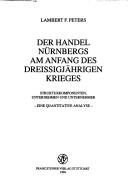
ISBN: 3515062882 Year: 1994 Volume: 112 Publisher: Stuttgart : Franz Steiner,
Abstract | Keywords | Export | Availability | Bookmark
 Loading...
Loading...Choose an application
- Reference Manager
- EndNote
- RefWorks (Direct export to RefWorks)
Nuremberg (Germany) --- Nuremberg (Allemagne) --- Commerce --- History --- Histoire --- -Commerce --- -History --- Nürnberg (Germany) --- Norimberga (Germany) --- Nyremvergē (Germany) --- Ni︠u︡rnberg (Germany) --- History. --- Nuremberg (allemagne) --- 17e siecle
Book
ISBN: 3412518697 Year: 2019 Publisher: Wien : Böhlau Verlag,
Abstract | Keywords | Export | Availability | Bookmark
 Loading...
Loading...Choose an application
- Reference Manager
- EndNote
- RefWorks (Direct export to RefWorks)
Heute bestimmen die Nürnberger Hauptpfarrkichen St. Sebald und St. Lorenz das Bild vom Glanz der Reichsstadt am Ende des Mittelalters. Der vorliegende Band richtet den Fokus zusätzlich auf weniger Bekanntes aus Architektur und Bildender Kunst des 14.-16. Jahrhunderts. Nürnberg zählt noch immer zu den Städten mit dem reichsten und künstlerisch bedeutendsten Erbe aus Spätmittelalter und Früher Neuzeit aufgrund seiner wirtschaftlichen Bedeutung, geprägt durch Handel, Handwerk und frühe manufakturielle Fertigung. Dies war der Boden für die Blüte der Künste. Der reich bebilderte Sammelband gibt mannigfache Anstösse, sich mit diesem Kulturerbe eingehender zu beschäftigen. Schwerpunkte bilden die ehemalige Deutschordenskirche St. Jakob und insbesondere ihr bedeutendes Hochaltarretabel des 14. Jahrhunderts sowie die Untersuchung medialer Aspekte von Werken der Dürerzeit.
Church architecture --- Nuremberg (Germany) --- Germany --- Buildings, structures, etc. --- Nürnberg (Germany) --- Norimberga (Germany) --- Nyremvergē (Germany) --- Ni︠u︡rnberg (Germany) --- Neurenberg (Germany)
Book

ISBN: 9783806223682 3806223688 Year: 2010 Publisher: Stuttgart Theiss
Abstract | Keywords | Export | Availability | Bookmark
 Loading...
Loading...Choose an application
- Reference Manager
- EndNote
- RefWorks (Direct export to RefWorks)
Art --- Guidebooks. --- Guides --- Nuremberg (Germany) --- Nürnberger Land (Germany) --- Nuremberg (Allemagne) --- Nürnberger Land (Allemagne) --- Guidebooks --- Nürnberg (Germany) --- Norimberga (Germany) --- Nyremvergē (Germany) --- Ni︠u︡rnberg (Germany) --- Nürnberger Land, Ger. (Landkreis) --- Neurenberg (Germany)
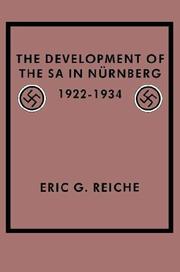
ISBN: 0511529007 0521306388 0521524318 Year: 1986 Publisher: Cambridge : Cambridge University Press,
Abstract | Keywords | Export | Availability | Bookmark
 Loading...
Loading...Choose an application
- Reference Manager
- EndNote
- RefWorks (Direct export to RefWorks)
In Nürnberg, as in other German cities, the SA (or stormtroopers) was the most visible Nazi organisation prior to the seizure of power by Hitler in 1933. This book looks in close detail at the development of the SA from its inception in 1922 until its overthrow by Hitler in 1934. More than a history of marches and violent encounters, the book analyses why, in a heavily industrialized city where the forces of democracy initially enjoyed strong support, a growing number of men from virtually every group of society decided to become members of the SA. Drawing from the biographical data of more than 350 stormtroopers and from extensive research in German archives, Professor Reiche reveals both the significance of the First World War and peer pressure, as well as the impact of the Great Depression, on the growth of the SA.
Nationalsozialistische Deutsche Arbeiter-Partei. --- S.A. (Sturmabteilung) --- SA (Sturmabteilung) --- Stormtroopers --- Nationalsozialistische Deutsche Arbeiter-Partei --- History. --- Nuremberg (Germany) --- Nürnberg (Germany) --- Norimberga (Germany) --- Nyremvergē (Germany) --- Ni︠u︡rnberg (Germany) --- Politics and government. --- Arts and Humanities --- History --- Brownshirts (Sturmabteilung) --- Neurenberg (Germany)
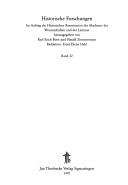
ISBN: 3799504710 Year: 1997 Volume: 22 Publisher: Sigmaringen Thorbecke
Abstract | Keywords | Export | Availability | Bookmark
 Loading...
Loading...Choose an application
- Reference Manager
- EndNote
- RefWorks (Direct export to RefWorks)
091 <43 NURNBERG> --- Handschriftenkunde. Handschriftencatalogi--Duitsland voor 1945 en na 1989--NURNBERG --- Nuremberg (Germany) --- -Nuremberg (Germany) --- -History --- -Sources --- Registers --- 091 <43 NURNBERG> Handschriftenkunde. Handschriftencatalogi--Duitsland voor 1945 en na 1989--NURNBERG --- -Nürnberg (Germany) --- Norimberga (Germany) --- Nyremvergē (Germany) --- Ni︠u︡rnberg (Germany) --- History --- Nürnberg (Germany) --- Sources. --- Registers. --- Sources --- Neurenberg (Germany)
Book
ISBN: 3921834163 9783921834169 Year: 1987 Volume: 16 Publisher: Bamberg Kaiser
Abstract | Keywords | Export | Availability | Bookmark
 Loading...
Loading...Choose an application
- Reference Manager
- EndNote
- RefWorks (Direct export to RefWorks)
Nuremberg (Germany) --- Intellectual life --- History --- 943.3 NURNBERG --- Geschiedenis van Duitsland: Zuid-Oost-Duitsland: Beieren; Frankenland--(reg./lok.)--NURNBERG --- -Nuremberg (Germany) --- -History --- 943.3 NURNBERG Geschiedenis van Duitsland: Zuid-Oost-Duitsland: Beieren; Frankenland--(reg./lok.)--NURNBERG --- Nürnberg (Germany) --- Norimberga (Germany) --- Nyremvergē (Germany) --- Ni︠u︡rnberg (Germany) --- History. --- Intellectual life. --- Nuremberg (Germany) - Intellectual life --- Nuremberg (Germany) - History --- Neurenberg (Germany)
Book
ISBN: 3525356455 9783525356456 Year: 1993 Volume: 108 Publisher: Göttingen Vandenhoeck und Ruprecht
Abstract | Keywords | Export | Availability | Bookmark
 Loading...
Loading...Choose an application
- Reference Manager
- EndNote
- RefWorks (Direct export to RefWorks)
Poor --- History. --- -Disadvantaged, Economically --- Economically disadvantaged --- Impoverished people --- Low-income people --- Pauperism --- Poor, The --- Poor people --- Persons --- Social classes --- Poverty --- History --- Economic conditions --- Nuremberg (Germany) --- -Economic conditions --- -History --- Disadvantaged, Economically --- Nürnberg (Germany) --- Norimberga (Germany) --- Nyremvergē (Germany) --- Ni︠u︡rnberg (Germany) --- Economic conditions. --- Poor - Germany - Nuremberg - History. --- Neurenberg (Germany)
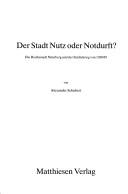
ISBN: 3786814767 Year: 2003 Publisher: Husum Matthiesen
Abstract | Keywords | Export | Availability | Bookmark
 Loading...
Loading...Choose an application
- Reference Manager
- EndNote
- RefWorks (Direct export to RefWorks)
Cities and towns, Medieval --- -Medieval cities and towns --- Germany --- Nuremberg (Germany) --- -Nuremberg (Germany) --- -Politics and government --- -History, Military --- Politics and government --- -Germany --- Medieval cities and towns --- Nürnberg (Germany) --- Norimberga (Germany) --- Nyremvergē (Germany) --- Ni︠u︡rnberg (Germany) --- History, Military. --- Politics and government. --- Neurenberg (Germany)
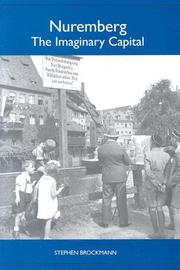
ISBN: 1281949523 9786611949525 1571136827 1571133453 Year: 2006 Publisher: Rochester, New York : Camden House,
Abstract | Keywords | Export | Availability | Bookmark
 Loading...
Loading...Choose an application
- Reference Manager
- EndNote
- RefWorks (Direct export to RefWorks)
Traces the development of ideas of Nuremberg as cultural and spiritual capital, thus offering a coherent view of German cultural and intellectual history. Nuremberg: The Imaginary Capital is a broad study of German cultural history since 1500, with particular emphasis on the period since 1800. It explores the ways in which Germans have imagined Nuremberg as a cultural and spiritual capital, focusing feelings of national identity and belonging on the city -- or on their image of it. Chapters focus on the city of Dürer and Sachs at the threshold of the modern era, the glory of which became the basis forall the other imaginary Nurembergs; the Romantic rediscovery of the city in the late 18th century and the institutionalization of Nuremberg discourse through the Germanic National Museum in the mid 19th; Wagner's Meistersingervon Nürnberg, the most famous artistic invocation of the Nuremberg myth; the Nazi use and misuse of the Nuremberg myth, along with Leni Riefenstahl's film Triumph des Willens, not only the best-known Nuremberg film butalso the most significant documentary of Hitler's Third Reich; and finally the postwar development in which "Nuremberg" became the symbol of a new kind of international law and justice. Stephen Brockmann analyzes how the city came to be seen, in Germany and elsewhere, as representative of the national whole. He goes beyond the analysis of particular historical periods by showing how successive epochs and their images of Nuremberg built on those precedingthem, thus viewing German cultural and intellectual history as an intelligible unity centered around fascination and veneration for a particular city. Stephen Brockmann is Professor of German at Carnegie Mellon University. He is the recipient of the 2007 DAAD (German Academic Exchange Service) Prize for Distinguished Scholarship in German and European Studies/Humanities.
Capitals (Cities) --- National characteristics, German --- Public opinion. --- Nuremberg (Germany) --- Civilization. --- German national characteristics --- Capital cities --- Cities and towns --- Nürnberg (Germany) --- Norimberga (Germany) --- Nyremvergē (Germany) --- Ni︠u︡rnberg (Germany) --- Neurenberg (Germany) --- German cultural history. --- Nazi use. --- Nuremberg discourse. --- Nuremberg. --- Romantic rediscovery. --- city of Dürer. --- international law. --- justice. --- national identity. --- Public opinion
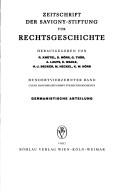
ISBN: 3412121967 9783412121969 Year: 1996 Volume: 1 Publisher: Köln Böhlau
Abstract | Keywords | Export | Availability | Bookmark
 Loading...
Loading...Choose an application
- Reference Manager
- EndNote
- RefWorks (Direct export to RefWorks)
Crime --- -Criminal justice, Administration of --- -Administration of criminal justice --- Criminal justice, Administration of --- Justice, Administration of --- Criminal law --- Criminals --- City crime --- Crime and criminals --- Crimes --- Delinquency --- Felonies --- Misdemeanors --- Urban crime --- Social problems --- Criminology --- Transgression (Ethics) --- History --- Law and legislation --- Social aspects --- Nuremberg (Germany) --- -Social conditions --- Administration of criminal justice --- Nürnberg (Germany) --- Norimberga (Germany) --- Nyremvergē (Germany) --- Ni︠u︡rnberg (Germany) --- Social conditions. --- History. --- Criminal justice, Administration of - Germany - Nuremburg - History. --- Crime - Germany - Nuremberg - History. --- Neurenberg (Germany)
| Listing 1 - 10 of 25 | << page >> |
Sort by
|

 Search
Search Feedback
Feedback About UniCat
About UniCat  Help
Help News
News